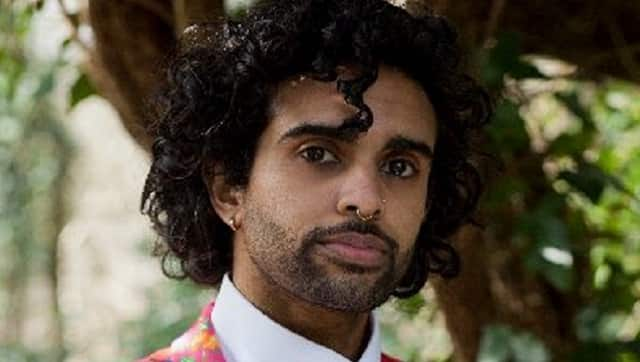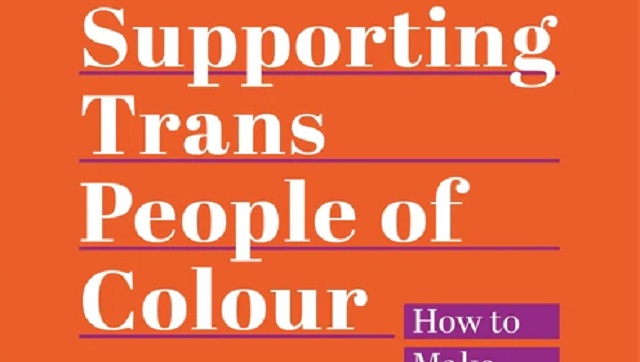Every year, 31 March is observed as the International Transgender Day of Visibility. Affectionately shortened to TDOV, it is meant to celebrate trans people, trans joy, trans pride, and trans achievements in a world that normalises transphobia and threatens trans existence. According to The SAGE Encyclopedia of Trans Studies (2021) edited by Abbie E Goldberg and Genny Beemyn, this day was “created” by Rachel Crandall-Crocker, a psychotherapist and the executive director of an organisation called Transgender Michigan in the United States. It was a reaction to the International Transgender Day of Remembrance (TDOR), “which honours trans individuals who have been murdered because of their gender identity.” The TDOV was initiated in 2009 to “raise awareness of trans communities worldwide,” and draw attention to the “contributions of trans people to society” rather than focusing “only on the horrific level of violence against trans people” in homes, schools, and workplaces. How does visibility help trans people in their quest for well-being? Sabah Choudrey, a trans person who works with Gendered Intelligence – a trans-led charity improving the lives of trans people in the UK – and is also a trustee of the Inclusive Mosque Initiative, has a beautiful explanation to offer in their new book Supporting Trans People of Colour: How to Make Your Practice Inclusive (2022), published by Jessica Kingsley Publishers. Choudrey writes, “Visibility is like a magnet. When we see a part of ourselves in someone else made visible, we are drawn towards it. When we see a possibility, it pulls us towards that too. It gives us permission to show our whole selves when we can see it in others.” According to Choudrey, seeing trans people of colour represented in print and digital media is “seeing a possibility that we can exist anywhere and testimony that we do exist everywhere.” What does “inclusive practice” look like, from Choudrey’s perspective as someone who is a psychotherapist in training, works with trans youth of colour to explore who they are and how they can thrive, cares deeply about community work, and challenges racism in LGBTQ+ spaces? It begins by adopting an intersectional lens, by learning from the experiences of trans people of colour, for they are doubly marginalised because of their gender identity and race. Born in a Pakistani Muslim family in the UK, Choudrey opens up about growing up as a trans person of colour. In childhood, they realised that they were different from others at school. When they were older, they coloured their hair, got more piercings, and moved out of their parents’ home to another city. They do not remember coming out by expressing it in words. Their family did not respond kindly at first. They saw Choudrey’s queerness as a Western disease, a sort of rebellion against their desi roots, a repudiation of where they came from. The author does not blame them. Choudrey did want to disconnect from their upbringing. They wanted to be close to white culture as their own culture seemed “backward, oppressive, and regressive.” They did not want to “fight twice as hard to be seen, heard and loved.” At the same time, Choudrey used to scroll through YouTube, looking for videos of trans men who looked like themselves – “Pakistani. South Asian. Brown.” Visibility mattered to them. [caption id=“attachment_10504081” align=“alignnone” width=“640”]  Sabah Choudrey[/caption] One of the most poignant moments in this book is Choudrey’s description of when they walked into a support group for transmen and listened to all the coming-out experiences. As each person spoke, Choudrey felt a heaviness grow in their stomach. They recall, “I felt worried, scared, and sad. I knew this was the support I needed: this is my community, and I should feel connected to them. I should feel better now. But I didn’t. Before I left, I took another look at everyone in the group and counted ten transmen. Ten white transmen.” All of a sudden, they were able to place a finger on why they felt all those feelings. It dawned on them that their family did not think about gender in the way that those white transmen did. The words that the support group used were new. Choudrey wondered if similar words existed in their own language, and thought about how they could not walk away from their family even if they did not understand transness because the family had given them so much. In this book, they write, “I felt alone because all I knew was that white trans people existed. White milestones and white transitions and white narratives that just became the milestones everyone must reach, the way to transition and the only trans narrative. That just became the way to be trans.” They began to notice that the way of transitioning that they had chosen for themselves “away from the white gaze and Western norms” was not seen as trans enough. In the course of their conversations with friends and medical professionals, Choudrey realised that they did not want to take hormones or take on a new “Anglo-sounding traditional male name.” They wanted to continue being in touch with their birth family even if the family misgendered them. They wanted to retrieve aspects of their history that colonialism had taken away from them. They wanted to resist Islamophobia in trans spaces. They did not accept defeat. They channelled their “desperation and isolation” into activism.
This book is about learning to examine whether spaces designated as safe are truly inclusive, or if they are tokenistic, discriminatory, and elitist.
Do they honour the needs and identities of trans people of colour? Are they accessible to people with disabilities? Are they within the reach of people from different class backgrounds? Do they seem more invested in doing the right thing or saying the right thing? Are they open to feedback and course correction? This book also considers how visibility does not always serve trans people; it can be at odds with their safety. Choudrey notes that transwomen and trans-feminine people from Black and Latinx communities have been hyper-visible but in the form of misrepresentation. “Society sees them, but not for who they are,” writes Choudrey. To back up this point, they cite Sam Feder’s documentary film Disclosure (2020), which focuses on depiction of trans people in Hollywood, and also looks at how these stories impact trans lives and American culture. Featuring Laverne Cox, Bianca Leigh, Alexandra Billings, Yance Ford, Susan Stryker, Jamie Clayton, Michaela Jaé Rodriguez, and Chaz Bono among other trans people, the film shows that “trans women have been misrepresented for decades in film and television, often playing into tropes as predators, criminals, and sex workers. They have been written into scripts as targets to ridicule and mock; a twist of ‘true’ identity reveals but nothing than to further a plot.” Representation matters but misrepresentation does not help trans people; it hurts them by contributing to transphobia. Choudrey argues that this is why the world needs a celebration like the TDOV. As it brings together trans communities across the world, it also highlights the stigma that trans people face on a daily basis. This day is a call to challenge transphobia. Choudrey’s thrust here is on accountability not cancellation, on sitting with discomfort, understanding privilege and power, recognising that the work of allyship and solidarity will necessarily involve making mistakes, expanding reading lists, diversifying news sources, supporting businesses run by trans people of colour, and – of course – learning to apologise. Chintan Girish Modi is a writer, journalist, commentator, and book reviewer. Read all the Latest News , Trending News , Cricket News , Bollywood News , India News and Entertainment News here. Follow us on Facebook, Twitter and Instagram.


)
)
)
)
)
)
)
)
)



